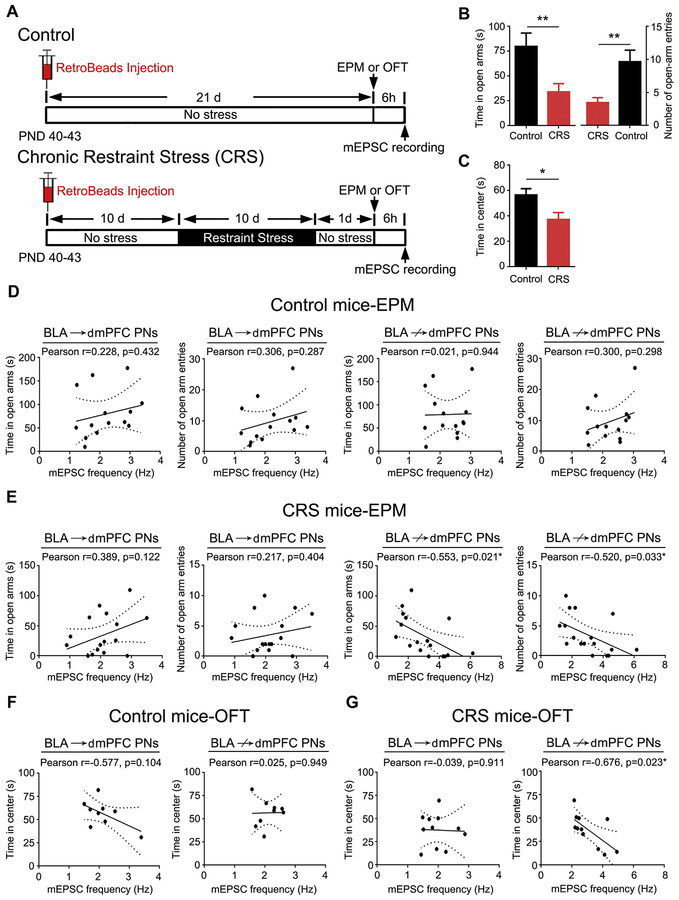Figure 4.
Excitatory transmission in basolateral amygdala (BLA) projection neurons (PNs) not targeting dorsomedial prefrontal cortex (BLA↛dmPFC) correlates with chronic restraint stress (CRS)–induced anxiety-like behavior. (A) Schematic of experimental designs. (B) Average time mice spent and entries into the open arms in the elevated plus maze (EPM). n = 14 control mice, n = 17 CRS-exposed mice. t test: **p < .01. (C) Average time mice spent in the center square in the open field test (OFT). n = 9 control mice, n = 11 CRS-exposed mice. t test: *p < .05. (D) Correlations between miniature excitatory postsynaptic current (mEPSC) frequency in BLA PNs targeting dmPFC (BLA→dmPFC) and BLA↛dmPFC and open arm exploration in unstressed control mice. (E) Correlations between mEPSC frequency in BLA→dmPFC and BLA↛dmPFC PNs and open arm exploration in CRS-exposed mice. (F) Correlations between mEPSC frequency in BLA→dmPFC and BLA↛dmPFC PNs and time in center square in unstressed control mice. (G) Correlations between mEPSC frequency in BLA→dmPFC and BLA↛dmPFC PNs and time in center square in CRS-exposed mice. Data are means ± SEM. PND, postnatal day.

